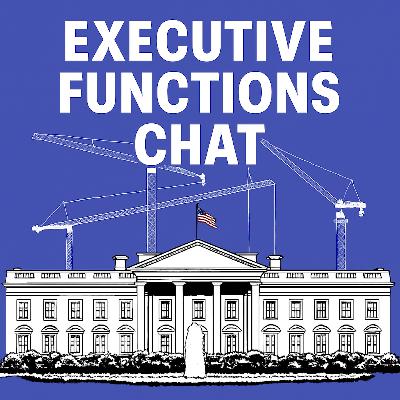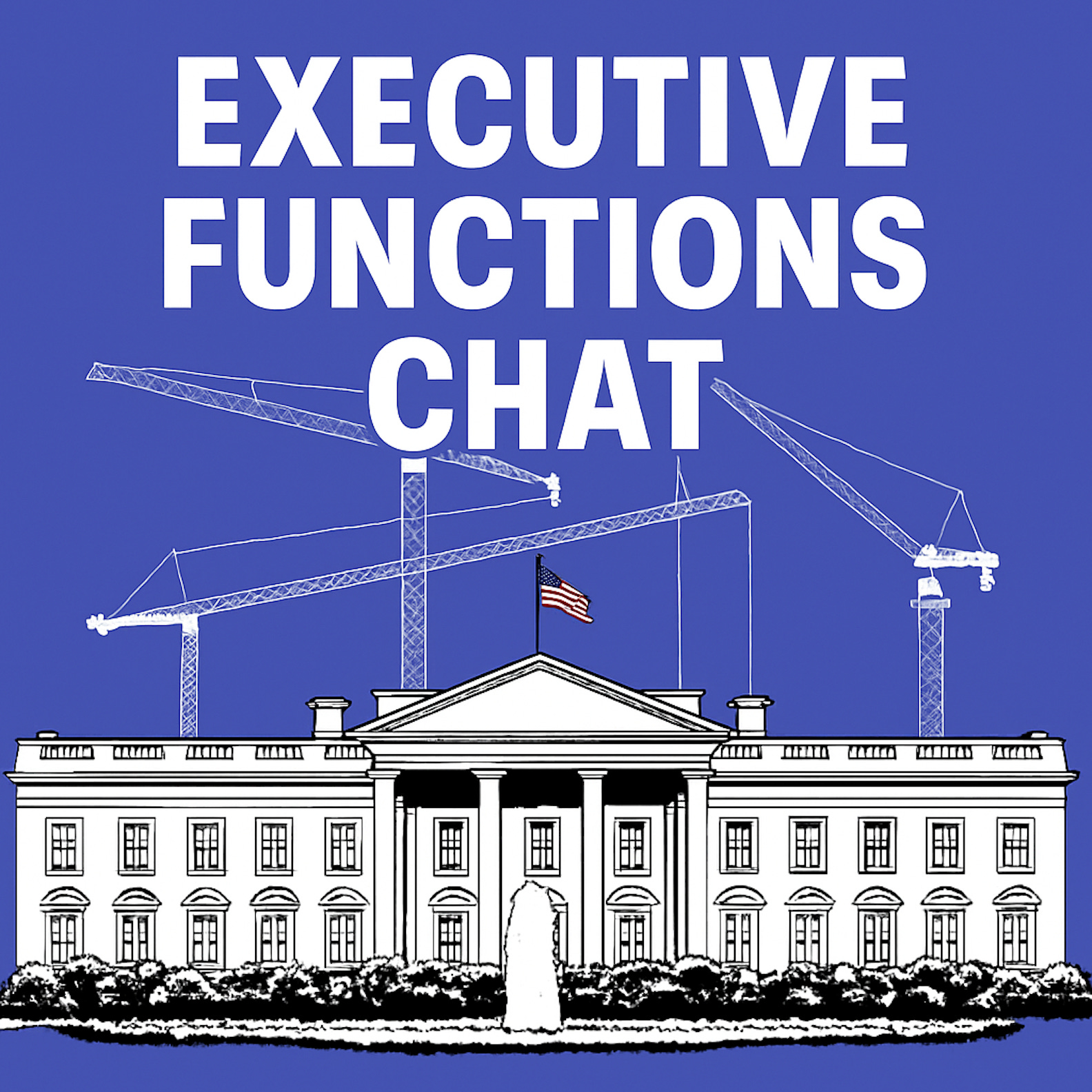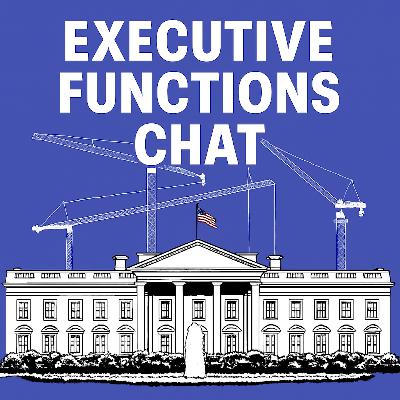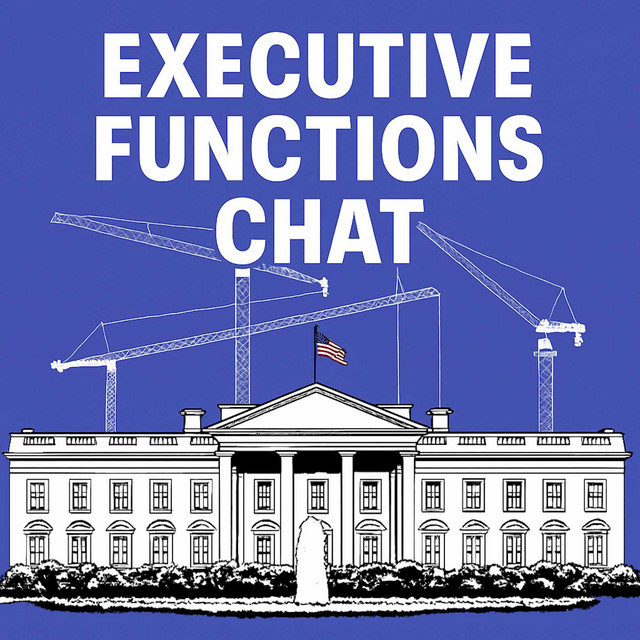Can President Trump Lawfully Fire Fed Governor Lisa Cook?
Description
Jack Goldsmith is joined by Professor Aditya Bamzai of the University of Virginia Law School. They discuss the president’s constitutional removal power, whether the president satisfied the statutory “for cause” standard in firing Cook, why that issue is hard, whether Cook’s pre-Fed actions are relevant, whether Cook gets notice and a hearing before firing, and whether a reinstatement remedy is available.
This is an edited transcript of an episode of “Executive Functions Chat.” You can listen to the full conversation by following or subscribing to the show on Substack, Apple, Spotify, or wherever you get your podcasts.
Jack Goldsmith: Good morning. This morning, I’m going to talk to Professor Aditya Bamzai at the University of Virginia Law School about the President’s firing of Lisa Cook, a member of the Federal Reserve Board of Governors. Aditya is an expert on the removal powers of the President, and he’s also an expert on removal in the context of the Federal Reserve, so he’s the perfect person to talk to us about these issues. So I’m just going to briefly go over what happened, but thanks for doing this, Aditya.
Aditya Bamzai: Thanks so much, Jack, for having me. Good morning to you. And you did leave out my most important credential, which is: I was once a civil procedure student in the class of Professor Goldsmith back in the spring of 2002.
I take full credit for all of your success. OK, so Monday the president fired Lisa Cook, a member of the Federal Reserve Board of Governors. The relevant statute, which is 12 U.S. Code § 242, prescribes the term for the governors and says they shall—I’m quoting—“hold office for a term of 14 years unless sooner removed for cause by the President.” And those words, “for cause by the President,” are going to be very important. One big question here is going to be: What counts as a for-cause removal?
Unlike many other removal provisions that are strewn about the U.S. Code and at issue in Supreme Court decisions, this one—I’m going to call it a naked for-cause provision—does not specify any criteria for removal. The standard criteria (and there are many variations) for removal are things like inefficiency, neglect of duty, or malfeasance in office. Those things, by the way, tend to focus on what happens in office that may be relevant.
But those criteria are not present in this removal statute, which is going to be very important. This is a simple, undefined for-cause removal provision.
So Trump claimed to fire Cook for cause. I’m reading the cause was allegedly false statements that she made on two mortgage agreements from 2021, before she became a member of the board. President Trump said that those alleged false statements deprived him of confidence in her integrity and honesty, and that is the cause for removal.
The last thing I’ll say is that even though the president invoked the statute and gave that as his reason—the for-cause provision as his reason for the removal—he also cited Article II of the Constitution. He said he was exercising the powers vested in Article II: both the executive power vested in him and his duty to take care to faithfully execute the law.
So that’s the situation. I want to get into the legal issues here, but can you just start off with a brief primer on presidential removal power—what it’s about, where it comes from?
Absolutely. The first thing I want to say on that is that there’s a lot that could be said, and we could easily have an hour of conversation over that topic alone. This is certainly a disputed issue in which people have differences of opinion. So in giving this very short summary, I’m no doubt dropping things on the floor and not covering the whole—
Sure, of course not. I mean—
Yeah. So look, the question of who’s the head of the executive branch comes up at the Constitutional Convention, and there are proposals to have a multi-headed executive, not just a single head. And then, famously, we come out of the convention with a Constitution that has unity in the executive—one head of the executive branch. What that means exactly—that’s just the form. What it means in substance is the question addressed by these removal debates, as well as the cases.
And the debates start almost immediately. The very first debate about the Constitution that occurs when Congress convenes is over who gets to control the various departments Congress is creating: Foreign Affairs, Treasury, the Department of War. These are the predecessors of the State Department and the Defense Department.
There’s a debate about it, and James Madison famously takes the view that the president has removal authority by virtue of this provision in Article II that vests the executive power in a president, and that Congress could not take that away from the president.
This is removal of executive officers.
Removal of executive officers, exactly. Now, various other members of Congress had different views, and exactly how they line up is certainly still disputed today among people writing on this topic. But that happens in 1789, and then there’s a little bit of a practice that develops, which always comes to the fore when there are big disputes over who controls the executive branch. That typically happens when parties switch power.
When the Democratic-Republicans, with the election of Thomas Jefferson, took over from the Federalists, the question was heavily debated once again in the early 1800s. It was heavily debated when Andrew Jackson took over and fired a whole bunch of people appointed in the prior two or three administrations. It was then heavily debated when Andrew Johnson tried to remove members of the prior Lincoln administration.
At that point, in fact, Congress enacted a statute called the Tenure of Office Act in 1867 that limited Johnson’s ability to control the executive branch. We literally had a moment when Johnson tried to fire the secretary of war, and the secretary said, “You can’t fire me. I’m just sitting here in my office.” And there was real tension between the president and the secretary of war.
All of those debates tend to arise against the backdrop of whether the rule ought to be: The president can remove, or the president has to go to the Senate and get the Senate’s approval before removing an officer.
And that’s because the Senate confirmed the officer.
Exactly. Usually the appointments of these principal officers occurred with the advice and consent of the Senate, and so there was the question of whether you had to go back to the Senate for its consent before engaging in removal. And the Tenure of Office Act essentially said that.
That was in 1867, when the Tenure of Office Act was enacted. Johnson was impeached and almost convicted, partly for claims that he violated the Tenure of Office Act in all these proceedings. The act stayed on the books until 1887, when it was repealed at the urging of various presidents who said it hindered management of the executive branch. They argued they could not get officers to perform their duties effectively with the statute in place.
At the same time, in 1887, Congress created what is now conventionally thought of as the first independent agency, the Interstate Commerce Commission. They include in that statute included language saying the president could remove commissioners for “inefficiency, neglect of duty, or malfeasance in office.” That language is now considered the genesis of what we refer to as for-cause provisions.
The ICC statute said inefficiency, neglect of duty, malfeasance in office. The ICC was followed shortly thereafter by another agency, called the Board of General Appraisers in 1890, with similar statutory language.
The Federal Reserve is thought to be the second major independent agency. It was not created until 1913, and it had different language from the earlier boards. As mentioned at the start of our conversation, the Federal Reserve’s statute used “for cause” language instead of what you could call the INM standard—the inefficiency, neglect, malfeasance standard.
So the question is: What does this language mean?
Most of the litigation in the Supreme Court in recent years, and frankly most presidential removal litigation, has involved the constitutional standard. The question has been whether the president must abide by the various for-cause standards Congress imposes, or whether under Article II—under the vesting clause and the take care clause—the president can disregard those statutory standards.
Is it fair to say that has been the thrust of the litigation in the Supreme Court—the constitutional standard?
I think that’s right. Yes.
So if we think about why that might be, one possible explanation is that up until recently, presidents did not tend to fire individuals subject to these standards. In fact, until modern times, there had only been one firing by President Taft—actually two firings, but one episode in 1913—and then another episode with President Nixon in 1969.
So presidents tended not to fire individuals subject to these protections. Most of the litigation instead involved regulated parties, who argued that executive officers subject to that type of removal provision were not being properly supervised by the president.








